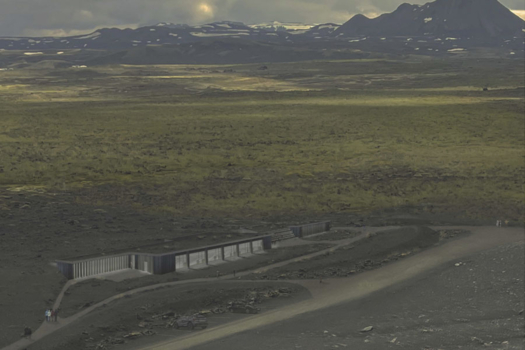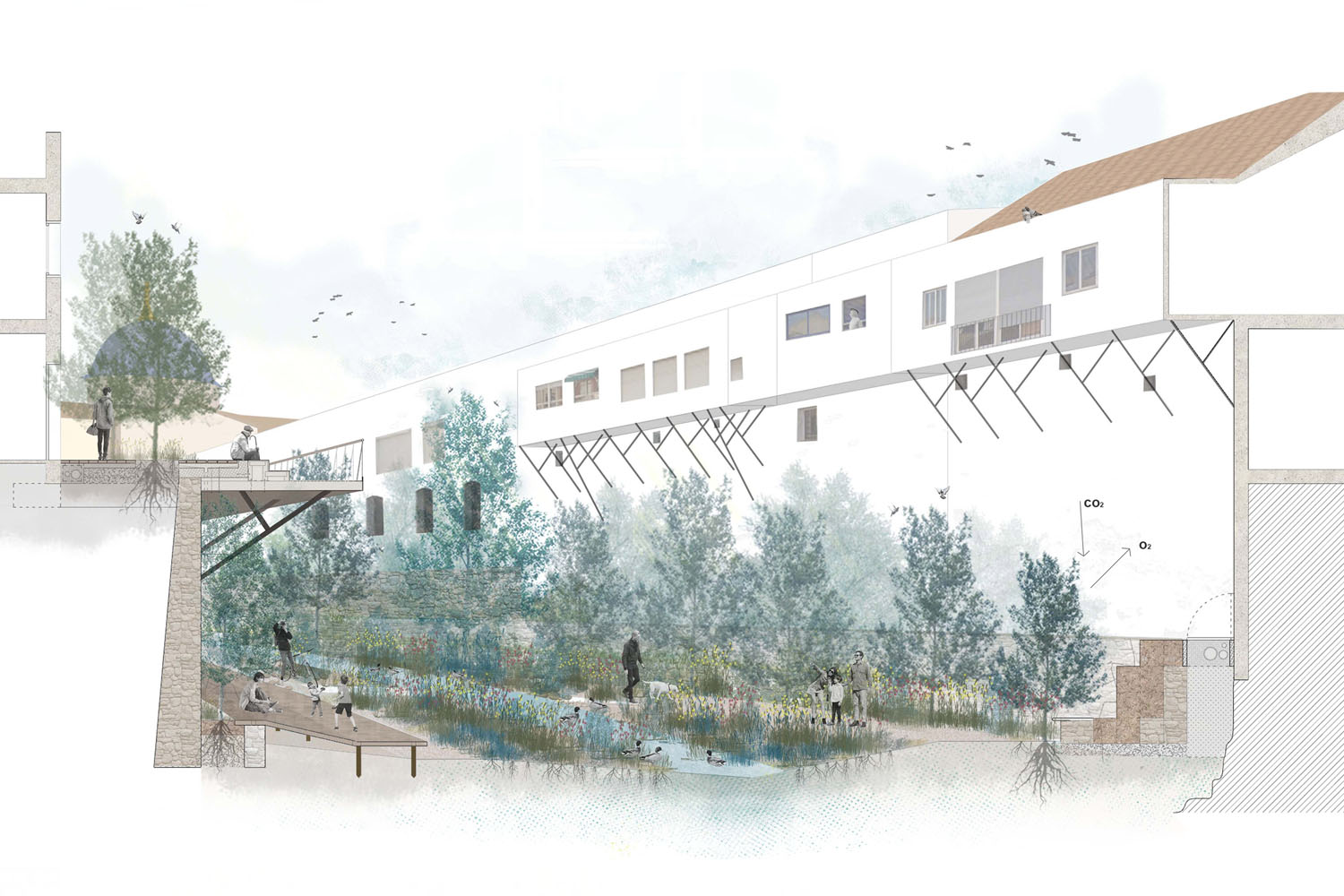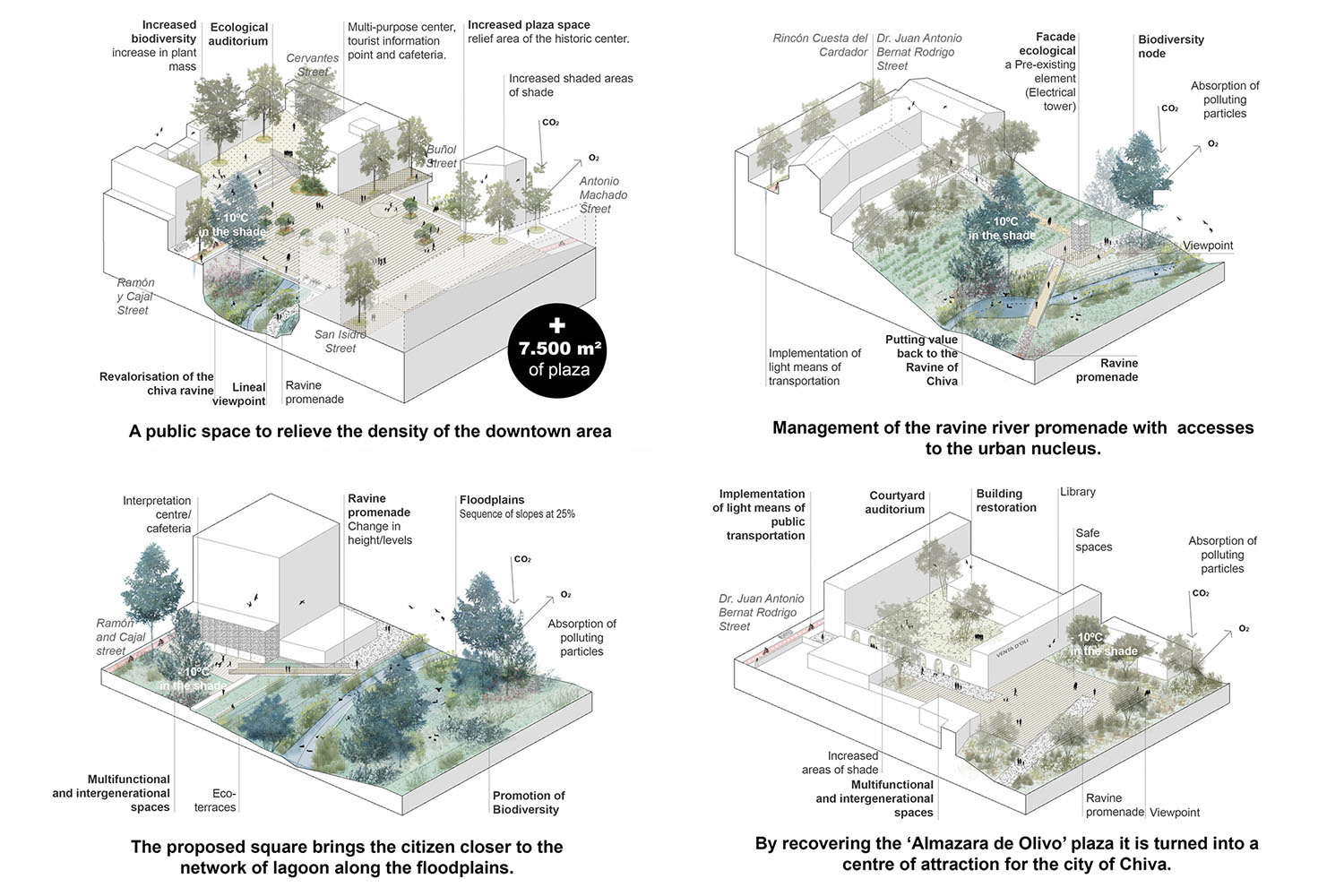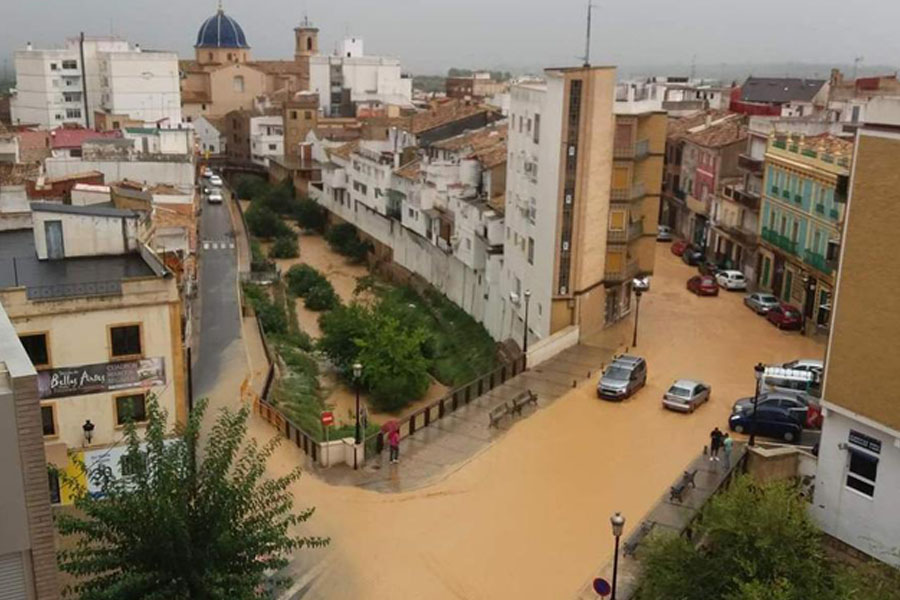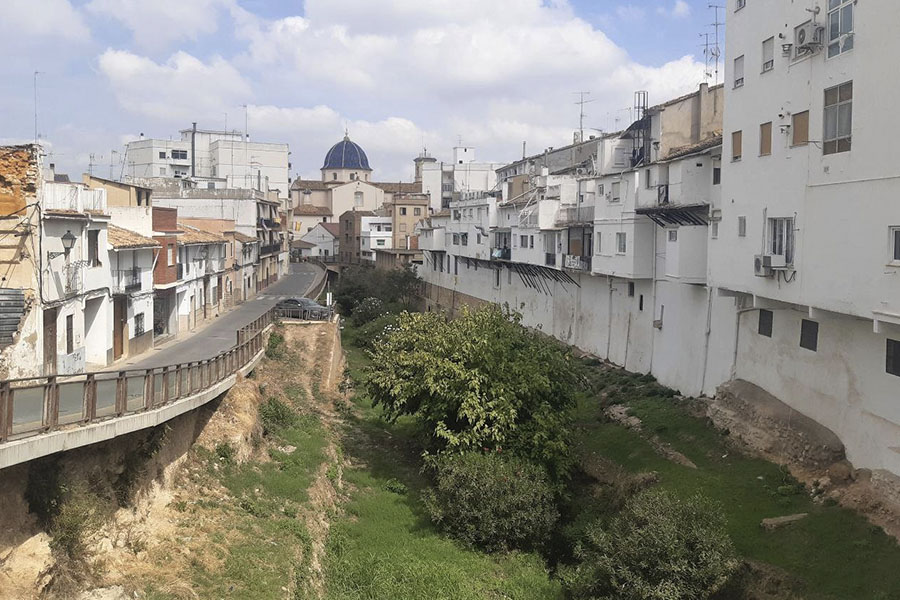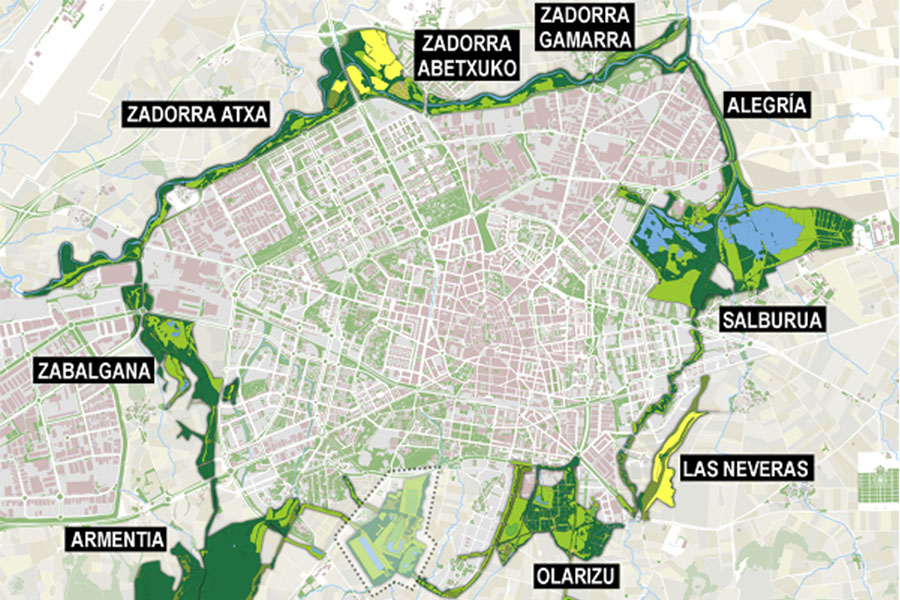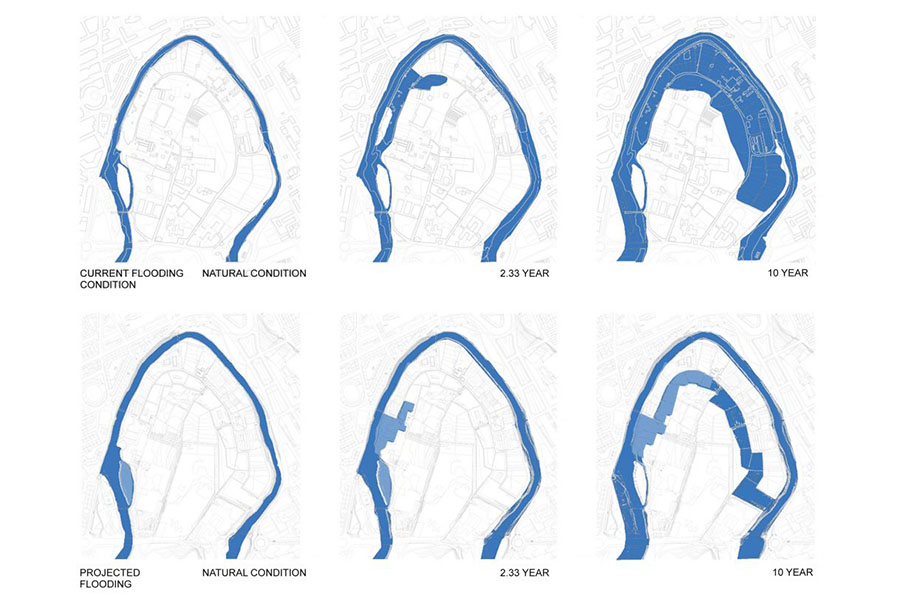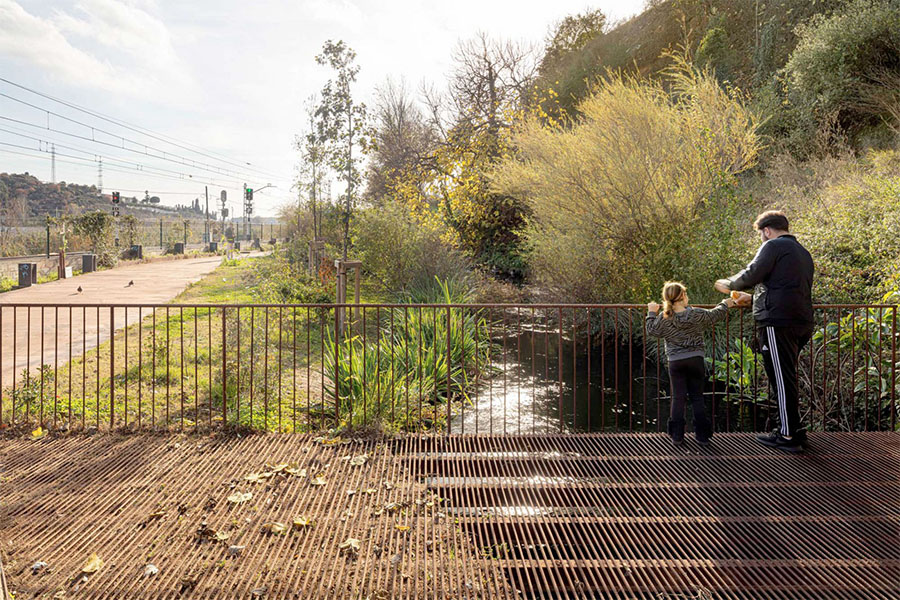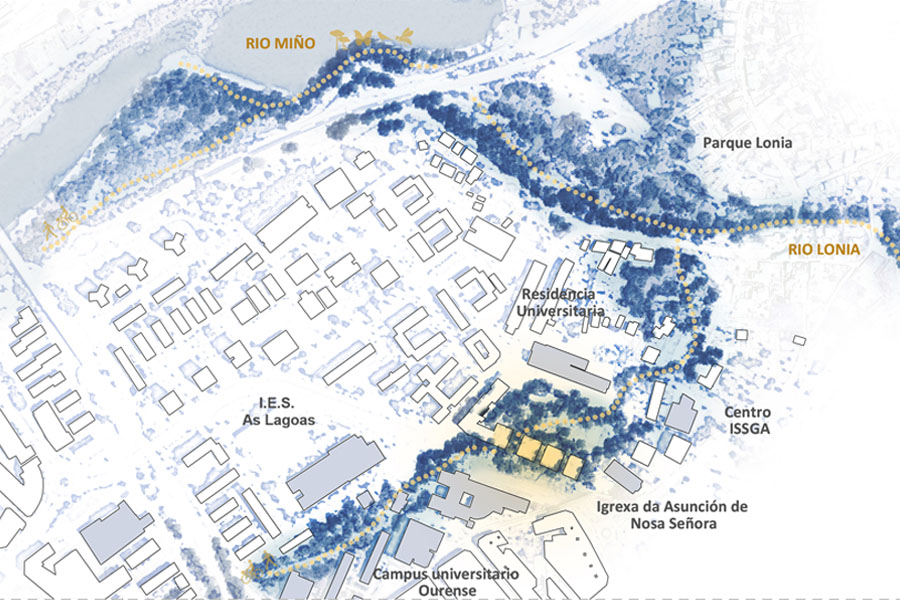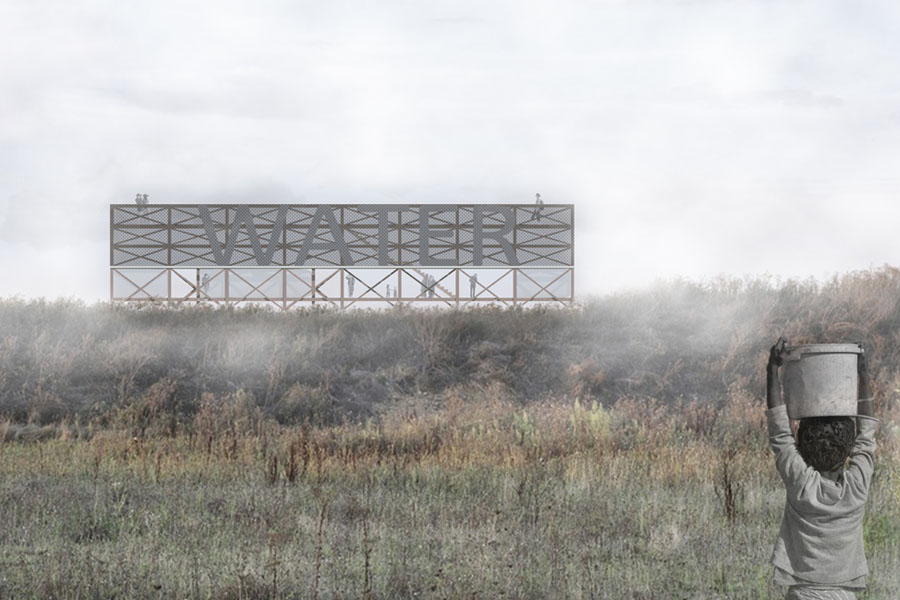Bringing back synergies
Chiva (ES) - Special Mention

TEAM PORTRAIT
VIDEO (by the team)
INTERVIEW
Click on the images to enlarge
1. How do you define the main issue of your project in relation with the theme “Living Cities Imagining architecture taking care of the milieus”? And in which way do you think your project can contribute to an ecological and/or social evolution?
Bringing back synergies promotes a series of inter-scalar strategies that constitute a green-blue infrastructure made up of a network of ecological-social systems where natural and anthropic areas are linked. The project favors the revaluation and promotes the biodiversity of the place, providing connections that articulate the coexistence between the natural-anthropogenic heritage and link the urban fabrics to help promote social cohesion.
2. How did the issues of your design and the questions raised by the site mutation meet?
Through a deep analysis of the context, the natural territorial dynamics and their specific impact in the center of Chiva a long time ago, we recognize the elements that generate the critical current situation, which is the canalization of the barrier that provokes periodical updates and a decline in biodiversity, and the lack of public space of quality by the predominance of vehicles throughout the territory.
PROJECT:



Yes, all members of our team have dealt with similar topics. Therefore, this project allowed us to put into practice all the knowledge we acquired over the last few years, either individually or together. Some of the reference projects that inspired Bringing back synergies are: Anillo verde de Vitoria-Gasteiz (Vitoria-Gasteiz City Council): is the set of parks that surround the city. It has its origin in an environmental restoration project started in 1993, which has transformed the degraded periphery into a natural space of high ecological value and the main recreational area of the city. Toulouse centre-ville (Michel Desvigne Paysagiste): the objective of the project is not simply to replace urban errors with a landscape in exchange, but to strengthen and respect the presence, quality and beauty of the already existing plant structure, working to guarantee its readability. The reintroduction of its public spaces is carried out, therefore, through the singling out of strategic and specific intersection sites. Restoring the Rec Comtal environment (Carles Enrich Studio): The proposed interventions serve to improve the quality of surface water and aquifers, reduce the negative effects of rainfall, increase drainage and soil quality, regulate urban microclimates and generate climate refuges, improve local ecosystems and many more actions. management that can contribute to improving the lives of citizens. This renaturation generates a green corridor along the Rec Comtal.
SITE:

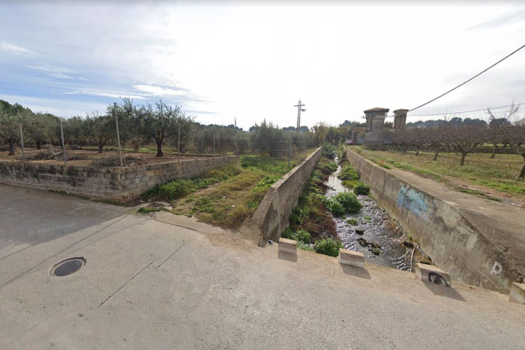

Bringing back synergies advocates an interscalar treatment of the proposed solutions, from the territorial to the urban. Due to this, it is possible to undertake the different strategies in a complementary manner, the renaturalization of Armajal and the surrounding flood parks at the same time as the recovery of urban space for the citizen. One of the keys to achieving an adequate implementation time and a participatory process lies in the involvement of the Public Administration as an engine of change since, due to the idiosyncrasy of the proposal and the place not only is the transformation of public spaces, but also privately owned spaces (crop areas, buildings in contact with the ravine, dirt roads, etc.) are fundamental for the optimal development of the intervention. To carry out the latter the project proposes, as an idea, the possibility of establishing compensation plans for the owners of the private spaces mentioned with the purpose of generating incentives among citizens and making all inhabitants feel participants of the development of the change that “Barranco de Chiva” needs.
REFERENCES:



The team was formed three years ago, when we decided to take part in the Europan 16 competition. The interest in the study of the territory and the large scale offered by some of the Europan sites was the main reason for generating a multidisciplinary team that was capable, through the union of architects and landscapers, of proposing broaders and more global strategies for the projects.
6. How could this prize help you in your professional career?
The development of the exercise, Europan 17, has allowed us to build a framework of common values, where we can formulate deep exchanges and form enriching human bonds; synergies that we want to perpetuate over time. Having been awarded will give us a certain projection of recognition, visibility and credibility, and could help us to create a context of trust that can generate links with other professionals as well as propose and carry out similar exercises.
TEAM IDENTITY
Legal status:
Team name: PYA Collective
Average age of the associates: 31 years old
Has your team, together or separately, already conceived or implemented some projects and/or won any competition? if so, which ones?
Since 2020, when the collective was founded under the name 'PYA collective', the practice has focused on projects linked to landscape and architecture, with principles of sustainability, resilience, intervention linked to place and citizenship, continuously participating in open competitions in order to develop the projects. The work of the collective has been recognised and awarded in several architectural competitions such as Second Prize in DI-CA Design Awards of the Canary Islands (Spain 2023), Second Prize in La Valentina (Spain 2022), Second Accesit in FECONS (Spain 2022), Finalists in Concéntrico 07 in Logroño (Spain, 2021), and First Prize Garden and Menzione Speciale Legno D'ulivo in Agora Design (Italy 2021).
WORKS:

